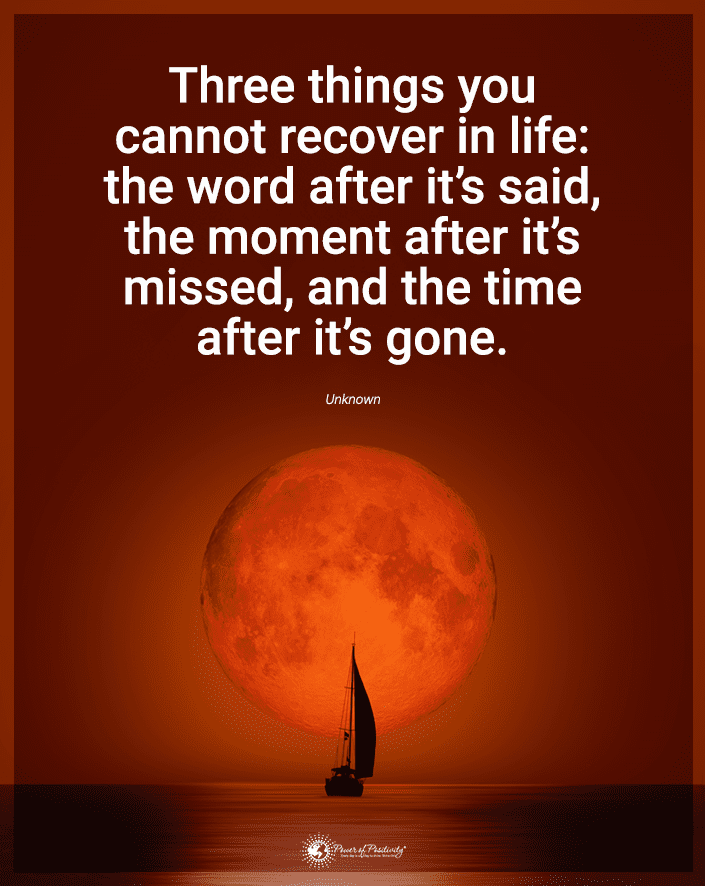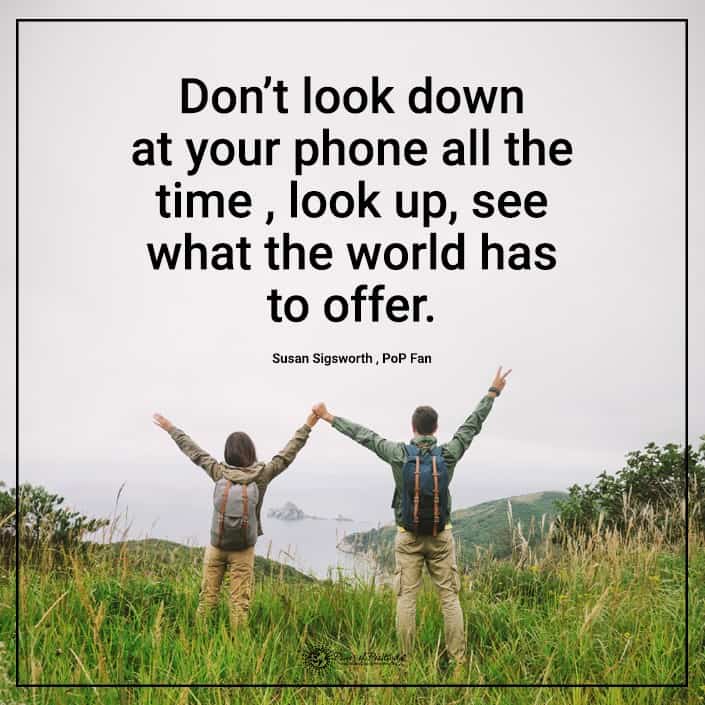In our highly digitized world, having a constant pipeline into the information stream is normal. We live in an age where we have the entire world at our fingertips. But that’s not necessarily healthy. Indeed, this constant accessibility to the internet can be overwhelming. The continuous bombardment of news, primarily negative, can make you feel like you’re trying to swim against a current of negativity. This feeling indicates that it’s high time for a digital detox.
25 Signs You Need a Digital Detox
Besides the mental harm done by consuming too much tech, you may also experience some physical symptoms. We will touch on both in this list.
1. Feeling Overwhelmed by Negative News You See on the Internet
The first sign you might need an internet detox is feeling overwhelmed by the ongoing influx of negative news. If your daily digital feed starts to weigh heavy on your mind, it’s time for a break.
2. Feeling Anxious Without Your Device
When separated from your device, anxiety strongly indicates needing a smartphone detox. If you can’t function without checking your phone, consider unplugging it for a while.
The phenomenon of feeling anxious or uneasy without access to one’s mobile phone is “nomophobia” (short for “no-mobile-phone phobia”). This condition highlights how much we have become dependent on our smartphones.
Smartphones have become integral in our daily lives. They are not just communication devices; they are our calendars, maps, entertainment systems, and even wallets.

3. You Check Your Cell Phone First Thing in the Morning
The state of your day shouldn’t depend on what’s on your phone. If you first reach for your device after waking up, it’s a clear sign that a phone detox could be beneficial.
If the first thing we reach for in the morning is our phone, we start the day reactive rather than proactive. Instead of setting our intentions for the day, we respond to the demands and distractions of the digital world.
Breaking this habit can be challenging, but it’s essential to a healthier relationship with technology. Some strategies include:
- Not using the phone as an alarm clock.
- Keeping it out of reach from the bed.
- Designating the first hour of the day as a “tech-free” time.
- These steps help you start the day with a clearer mind, focused on your needs and goals rather than the demands of the digital world.
4. Sleep Problems
If you’re staying up late, scrolling through social media, or struggling to fall asleep after binge-watching your screen time may affect your sleep cycle, indicating a need for a screen detox.
You have probably read how blue light can disrupt your sleep cycles. But on a more fundamental level, the buzzing, dinging, and alerts can also awaken you if you forget to silence them before retiring.
5. Reduced Physical Activity
Are you spending more time sitting with your device than moving around? A decrease in physical activity due to excessive-tech use is a sure sign of needing a tech detox.
6. Ignoring Real-Life Interactions in Favor of Internet Friendships
If you find yourself engrossed in your device even when in the company of others, it’s a sign that you require a digital detox.
7. Falling Behind on Personal Goals
The digital world is a distraction that can keep you from achieving your personal goals. If your to-do list remains unchecked because of your tech use, it might be time for a technology detox.
8. Constantly Comparing Yourself to Others Online
If you compare your life to what others present online and feel unhappy about it, this is a significant sign you might benefit from a digital detox.
9. Inability to Focus or Complete Tasks
If your productivity is dwindling and you’re unable to focus on tasks because you’re constantly checking your device, you might need digital detoxification.
10. Feeling Unfulfilled Despite High Screen Time
If you’re spending hours online but still feeling unfulfilled or bored, consider this a sign that a digital detox could do you good. Online interactions lack the joy of personal exchanges. This inversion of how we interact over the past few years leads to dissatisfaction and a longing for more.
21. Physical Discomfort or Pain
Spending long hours hunched over your devices can lead to physical discomfort. You might experience neck, shoulders, or back pain, commonly known as “tech neck.” This pain could indicate a need for a technology detox.
22. Eye Strain or Vision Problems
If you notice dryness, irritation, decreased vision, or regular headaches, you could be experiencing digital eye strain. These are definite signs you should consider a screen detox.
Here’s why:
Prolonged usage of digital screens can lead to a condition known as digital eye strain or computer vision syndrome. These outcomes stem from a variety of factors:
- Blue Light Exposure: Digital screens emit blue light with shorter wavelengths and more energy than other light types. Some research suggests that long-term exposure to blue light may damage the retina, the inner lining at the back of the eyes responsible for vision.
- Blinking Less Often: When we focus on digital screens, we tend to blink less often—about one-third less than usual, according to studies. Blinking is essential to moisten the eyes and prevent dryness and irritation.
- Close and Constant Focus: Most digital work requires close focusing and re-focusing. This continuous effort from the eye muscles to adjust can cause fatigue and strain.
- Poor Lighting and Glare: Viewing a digital screen in poorly lit conditions or under harsh lighting increases the contrast and leads to eye strain. Glare reflected off the screen can also cause similar issues.
- Improper Viewing Distance or Angle: If your screen is incorrectly positioned, your eyes must work harder. The recommended distance is an arm’s length away from your screen, and the top of your monitor should be at or slightly under eye level.
The common symptoms of digital eye strain include dryness, irritation, burning sensation in the eyes, blurred vision, headaches, and fatigue.
The American Optometric Association suggests following the 20-20-20 rule to combat this. Every 20 minutes, look up and away from your screen. Gaze at an object approximately 20 feet away for at least 20 seconds. Regular eye exams and wearing computer glasses can also help. If you’re experiencing persistent symptoms, see your eye care professional for more advice.
23. Weight Gain
Physical inactivity due to excessive screen time can contribute to weight gain. If you notice this trend, a tech detox could help you break the cycle and lead a more active lifestyle.

24. Carpal Tunnel Syndrome
Long hours of typing or scrolling can cause repetitive strain injuries like carpal tunnel syndrome.
Carpal tunnel syndrome comes from pressure on the median nerve that runs an arm’s length and passes through a passageway in the wrist called the carpal tunnel. This nerve ends in your hand. It’s often a result of repetitive motions, such as typing or any wrist motions that you repeatedly do. Here are the common symptoms:
- Numbness, tingling, or prickling sensations in the thumb and fingers, particularly the index, middle, and ring fingers.
- Pain in the wrist or hand may radiate into the arm.
- The hand’s weakness makes it difficult to grip objects or perform fine movements.
- Random shock-like sensations that radiate to the thumb or the index, middle, and ring fingers.
Discomfort in the hand and wrist, often worse at night. - The tendency to drop objects due to numbness, weakness, or loss the awareness of your hands.
- These symptoms often develop gradually and can affect one or both hands. If you’re experiencing these symptoms, seeking medical advice is essential.
Treatment can help relieve the symptoms and prevent permanent nerve damage.
25. Chronic Fatigue
Excessive screen time might be to blame if you’re constantly tired despite getting enough sleep. Chronic fatigue could indicate a need for digital detoxification.
Remember, these physical signs that you should put down the tech for a break. But they might also warrant a visit to a healthcare professional. It’s essential to take these signs seriously and seek appropriate care.
How to Do a Digital Detox
Now that you know why you need to detoxify, here’s how to try it.
1. Set Clear Goals and Boundaries During the Digital Detox
An exact idea of what you wish to gain from your digital detox helps you set boundaries. Specify the duration and what devices or apps you will be avoiding.
2. Choose the Right Time to Do a Digital Detox
Timing is crucial for a successful digital detox. Choose a period when you can afford to disconnect from the internet without significant inconveniences.
3. Inform Others About Your Digital Detox
Tell your friends, family, loved ones, and co-workers about your digital detox plan. Their understanding and support can greatly contribute to your success.
4. Remove Temptations During the Digital Detox
Make the detox easier by removing the sources of temptation. Log out of social media accounts, uninstall distracting apps, and keep your devices out of reach to help with your tech detox.
5. Substitute the Internet with Positive Activities Offline
Replace your screen time with fulfilling activities like reading, hiking, or meditating. This internet detoxification is not just about taking away—it’s about adding healthier habits into your life during your phone detox.
6. Keep a Journal Throughout the Digital Detox
Record your thoughts and feelings during your digital detox. Journaling can provide surprising insights into how much technology influences your daily life.
7. Get Outside to Distract Yourself During Your Digital Detox
Nature has a healing effect on our minds. Spend some time outdoors during your screen detox—breathing fresh air and appreciating the beauty around you can help you unwind.
8. Engage in Mindful Activities
Practicing mindfulness during your internet detox can help restore your attention and focus. Activities like yoga or mindfulness meditation can be helpful.
9. Rediscover the Joy of Reading a Book–A Real Book Not One on the Internet
Use this technology detox time to catch up on your reading. The joy of diving into an engaging book is an excellent antidote to media overload.
10. Establish a Healthy Relationship with Technology
After your digital detoxification, work on establishing a balanced relationship with technology. Set specific times for digital activities, and ensure they don’t infringe on your personal or family time.

Final Thoughts on Knowing the Signs You Require a Digital Detox
Powering off from digital platforms can feel like someone has tossed you a lifeline in the overflow of negativity. An internet detox is not about shunning technology altogether; it’s about creating a healthy, sustainable relationship with it. In the grand river of digital information, we should learn to swim with the current, not against it. And sometimes, the best way to do that is by stepping out of the river altogether.
If you recognize these signs in yourself, a digital detox might be just what you need. Try it and experience the difference it makes.
!function(r,u,m,b,l,e){r._Rumble=b,r[b]||(r[b]=function(){(r[b]._=r[b]._||[]).push(arguments);if(r[b]._.length==1){l=u.createElement(m),e=u.getElementsByTagName(m)[0],l.async=1,l.src=”https://rumble.com/embedJS/ug6pt”+(arguments[1].video?’.’+arguments[1].video:”)+”/?url=”+encodeURIComponent(location.href)+”&args=”+encodeURIComponent(JSON.stringify([].slice.apply(arguments))),e.parentNode.insertBefore(l,e)}})(window,document,”script”,”Rumble”);
Rumble(“play”,{“video”:”v4re2v”,”div”:”rumble_v4re2v”,”autoplay”:2});
The post 25 Signs You Need a Digital Detox (And How to Do It) appeared first on Power of Positivity: Positive Thinking & Attitude.




